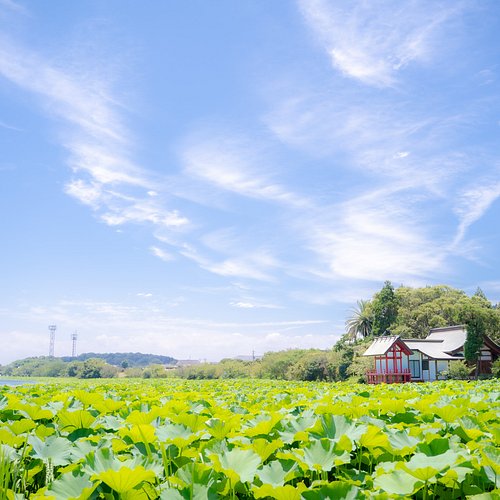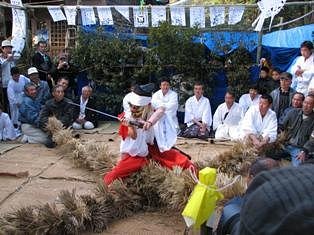The 9 Best Points of Interest & Landmarks in Koyu-gun, Kyushu
Discover the best top things to do in Koyu-gun, Japan including Hyuga-Shintomi Station, Suijin Shrine, Nitta Shrine, Nyutabaru Kofun Group, Komizugaike Pond, Maizuru Park, Takanabe Daishi, Tonda Light House, Yunomiya Zarombai.
1. Hyuga-Shintomi Station
2. Suijin Shrine
3. Nitta Shrine
4. Nyutabaru Kofun Group
5. Komizugaike Pond
6. Maizuru Park
7. Takanabe Daishi
Overall Ratings
4.0 based on 9 reviews
Reviewed By brftn - Atlanta, United States
High on a hill overlooking Takanabe City in Miyazaki Prefecture is Takanabe Daishi, a Buddhist Temple that proves if you get off the beaten path, Japan is often even more strange and more wonderful than you might have first imagined. We were drawn to this site by the primitive statues created by Yasukichi Iwaoka (1889-1977). His works reminded of us of naive or “outsider” art here in the USA by the likes of Robert Traylor, Howard Finster, St. EOM, and Albert Hodge, among others. Some have noted the similarity of Yasukichi’s work to the Easter Island statues and Totem Poles of Native Americans. His sculptures seem to draw from the tradition of the Tanokami (aka Tanokansa) statues in Japanese villages used to protect rice fields and protect against natural disasters. Some of these can be seen around Ebino City that lies southwest of Miyazaki City. The site includes a miniature version of the Shikoku Pilgrimage of 88 temples (aka the Ohenro Pilgrimage). Yasukichi hired professional stone carvers to make these statues. (Each is numbered (in Japanese kanji) so carry a guidebook of the Shikoku pilgrimage to add some more depth to your experience of Takanabe Daishi). Yasukichi believed that this mini-pilgrimage would help console the souls of those buried in the nearby ancient Mochida burial mounds whose graves had been disturbed by robbers. He learned to sculpt by watching the professional carvers he hired work. He then began carving statues of Shinto dieties (kami), Buddhist icons, and parishioners of his temple. Some of his parishioners helped him carve the statues. Several of the statues are monumental in scale and include Inari the god of the rice harvest, Susano no Mikoto the god of storms, and Amaterasu the sun goddess. There are also a Buddhist Temple and a Shinto shrine on-site that Yasukichi built. Takanabe Daishi has been restored in recent years. Improvements include (thankfully) a clean modern restroom facility. The restrooms are decorated with whimsical wooden self-portraits in the Takanabe Daishi style apparently carved by schoolchildren. The site was not staffed the day we were there. However, there may be a local volunteer there sometimes. We spent two and half hours there and only left then because of our travel schedule. We only saw one other person, apparently a local just passing through. After our visit we went to Akiyama, a seafood restaurant on the beach that was recommended by our taxi driver. It is just a 5 minute walk from Takenabe Station. The food, atmosphere and hospitality were wonderful! I highly recommend a trip to Takanabe Daishi!
8. Tonda Light House
9. Yunomiya Zarombai
It is an old plum garden in the Temple district of Yunomiya. It is said that originally it increased from one tree.There is a legend that it became a bud slating and Motoki from the cane of the plum tree that Jim Emperor stood up, but the beginning is not certain. Since the song appeared in the literature in the Edo period, 300 years ago, it seems to have been famous as the plum orchard today.









